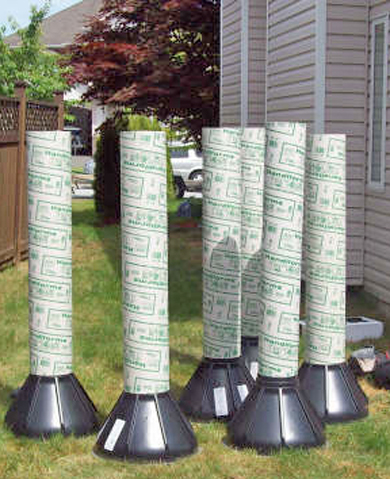I plan on making a small deck and I live in Howard County Maryland. The deck code here says that the concrete footing must be 30 in below ground level and have a thickness of at least 8 inches (i.e. to 22 inches below ground level). This which means the wood post is in the ground. This is also how all the contractors I have talked to would do it. (Deck guide for my county (PDF))
The books on deck building I have only suggest having the concrete footing extend above ground level by a little bit (I think this is called a tube footing). This method has the post not touching the dirt.
Is the second method better? Do I need to worry about the post rotting with the first method? I am assuming that I should be able to do it the second way because that exceeds the minimum requirement here. Is there anything better about the first method? Should I consider a different type of footing than these two? My deck with have about 3 posts and footings and will also attach to a ledger on the house.



